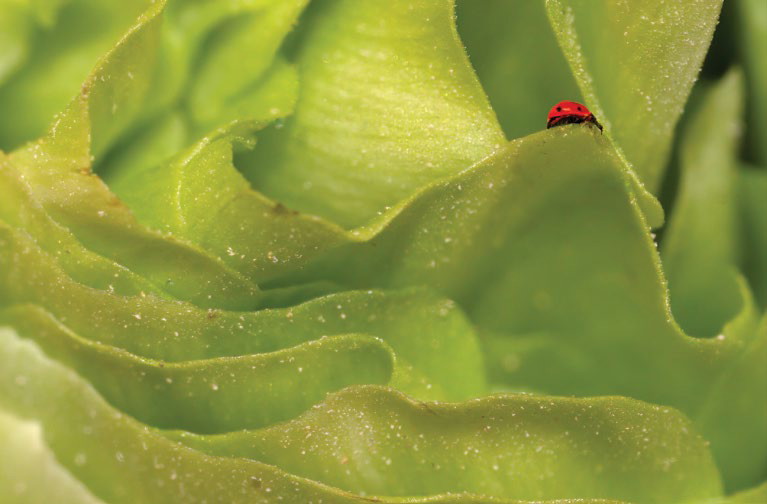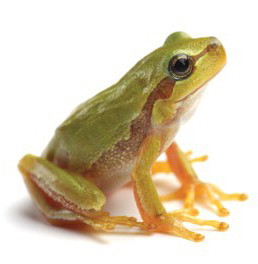Foreign object contamination of fresh produce
BY RICHARD BENNETT TECHNOLOGY MANAGER, PRODUCE MARKETING ASSOCIATION AUSTRALIA-NEW ZEALAND (PMA A-NZ)

MANY so-called pests that give rise to consumer complaints are actually beneficial insects.
Fruit and vegetable purchases may occasionally contain unintended additional contents, such as physical contaminants or foreign objects.
Growers aim to eliminate these from the fresh produce sent to retailers and processors.
Most retail and food service specifications have a zero tolerance for pests, dead or alive, or other physical contaminants. Consumers also have a low tolerance of additional contents.
Physical contaminants is a broad category that includes but is not limited to soil, stones, sticks, weeds, insects, frogs, glass, nails, plastic and rubber, pens, pins, paper clips and jewellery.
Some are a social media novelty while others have genuine injury potential. Some come from the environment and others are from harvest, handling and packing.
Some can result in withdrawals, recalls and negative media coverage.
The following Q&A’s address the topic of contamination of pests and objects.
Pests
The good news is that pests in produce are highly unlikely to result in foodborne illness. That’s the domain of bacteria, not bugs.
Q What pests can be found in fresh produce?
There are two broad categories of pests, ‘invertebrate pests’ and ‘vertebrate pests’. Invertebrates are those without a backbone. This includes mainly insects like spiders, moths, aphids, flies, caterpillars, beetles, cockroaches and earwigs, and their eggs. Vertebrate pests are those with a backbone and include frogs, skinks and snakes.
Pests in produce are highly unlikely to result in foodborne illness.
Q Where do pests come from?
Pests either breed within the crop or migrate in from surrounding bushland, roadsides, gardens or neighbouring farms. They are looking for food, shelter or a mate. Many insects can travel many hundreds of metres on breezes. Some are carried in on farm machinery. There is usually nothing stopping pests from migrating into fruit and vegetable production areas. Many so-called pests that give rise to consumer complaints are actually beneficial insects. These are ‘good bugs’ that have migrated in to eat the pests that want to eat the crop and include certain ladybugs, spiders and earwigs, as well as frogs and skinks.
Q How do growers usually control fruit and vegetable pests?
Most growers practice Integrated Pest Management (IPM), the combination of biological, cultural and chemical methods for controlling pests and diseases. IPM means that there is often a background population of pests and predators in any crop. Some attribute the perceived increase in insect contamination to the shift away from broad-spectrum insecticides.
Biological control includes predators, parasites and pathogens that eat, infest or otherwise suppress or kill pests and diseases.
Cultural methods of control include crop rotation, companion planting, buffer zones, fallows and cultivation practices that disrupt the pest and disease life cycle by disrupting their habitat.
Chemical control includes kill or repel substances used as a last resort and often in conjunction with biological and cultural control methods.
Other techniques include mass trapping and the use of pheromones to make it difficult for male and female pests to meet and breed.
Q Why are frogs and spiders most often reported in fruit and veg?
Frogs and spiders might be the most reported in the media, possibly for their fear factor or general interest, but moths and soldier beetles are the most reported complaints to retailers from consumers of leafy vegetable mixes.
Q As spiders and frogs gain the most attention, how do they get there?
Spiders are prolific predators and will travel some distance often at night or ‘on the breeze’ to feed on moths, beetles, millipedes and the like. They tolerate hot and cold and wet and dry. They can shelter in bunches of grapes or broccoli heads where they are very difficult to detect, or surf through wash water clinging to a spinach leaf.
Frogs, also a great indicator of good environmental health, are also reported in salad vegetables in particular. The moist conditions of leafy vegetable farms and the presence of the same spiders and insects mentioned above, provide an ideal environment for frogs. Salad vegetables are often mechanically harvested and sorted and frogs are well disguised to pass through processing and into a bag. For every frog found in retail produce, many, many frogs have been found when the product is sorted, inspected and washed.
Q What is being done to reduce pest contamination in fresh produce?
Apart from stepping up physical inspection of finished product, most effort is being directed to prevention of pests getting into crops and being picked up at harvest.
At the most expensive end, some growers are resorting to ‘protected cropping’, which is growing crops in polyhouses or glasshouses.

FROGS are a great indicator of good environmental health.
An intermediate step is to use floating crop covers, a light nylon mesh that is draped over the rows to exclude pests, eucalyptus leaves, etc.
As a lot of insect and other pests are most active at night, the use of light traps and other attractants to lure pests away from crops is also an option. There are also engineering solutions being developed for harvest and sorting equipment that enable better elimination of all contaminants.
Other physical contaminants
Other physical contaminants include those from the growing environment, such as sticks and stones. There are also those from the harvest and packing workplace, such as nuts and bolts from equipment or paper clips from a worker’s pocket. There are food safety processes in place in most horticultural businesses to minimise this occurrence, but some still slip through undetected.
Q What is industry doing to reduce these physical contaminants in produce?
Preventing environmental contaminants such as stones and sticks starts with selecting a ‘clean’ growing site or thoroughly inspecting. and cleaning up sites that may be contaminated. For crops that are mechanically harvested, machinery improvements such as shakers and screens remove most unwanted objects, but may also add hazards such as nuts and bolts and fragments of belts and rollers if machinery is not properly maintained.
Inspection is still required to remove eucalyptus leaves, weeds and feathers, for example. Picking containers off the ground and not harvesting during wet weather also helps.
Tampering incidents are rare but when they do happen, they can create injury to consumers
Equipment, containers and the packhouse structure itself can be a source of non-pest foreign objects. Any maintenance needs to be cleaned up to prevent metal shavings, tools, flakes of paint and pieces of plastic and rubber from attaching to produce or finding their way into packaging. Light fittings need to be protected or special globes used and glass bottles from any source should not be in the packhouse at all. Office items such as pins, staples, paper clips and pens need to stay in the office or be strictly controlled.
Many packers and processors have now installed metal-detecting equipment as the final opportunity to prevent contamination from metallic objects.
Q What about intentional contamination (tampering) from foreign objects?
Produce may be interfered with at any stage along the supply chain from the farm to the kitchen. This is known as tampering. Such incidents are rare but when they do happen, they can create injury to consumers.
Media coverage can then create substantial economic and reputational harm to the producer/s and the entire industry. As we saw in 2018, copycat behaviour creates additional issues. Tampering is firstly a matter for the police as well as health officials and severe penalties may apply. Addressing the threat of tampering is a requirement of food safety certification programs implemented throughout the industry.
Growers and packers of fruit and vegetables have a number of actions they can implement to address this issue. Firstly, a thorough threat assessment needs to be undertaken throughout the business, identifying where tampering may occur. The risk is then calculated by assessing the likelihood and severity of tampering and then steps are implemented to address significant risks. Such steps are underpinned by a strong food safety culture that encourages staff to speak up if they see anything suspicious. They include staff training in food safety and security, staff and visitor sign-in register, restricted areas, security cameras, locks where appropriate, a key register, detection devices, tamper-proof packaging and occasional testing of systems to ensure potentially tampered product can be identified, traced and isolated.
MORE INFORMATION
